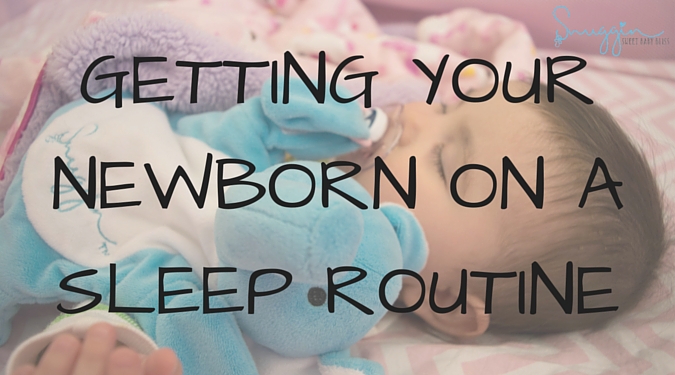
Getting sleep in the first several months after baby is born is challenging, but being able to start a sleep routine in your babies first months will set you up for success later on. Babies sleep an average of 16 to 17 hours when they are newborns, so your baby will probably be able to follow your routine fairly well at first. There are several steps to setting up a sleep routine for your baby, so read on!
- Recognize baby’s cues. Some of the signs that your baby is tired are rubbing her eyes, flicking her ear with her hand, circles under her eyes, gazing into space, yawning and stretching a lot, becoming fussy and then quiet and still, and if you are holding her, she may bury her head in your chest. When this happens, recognize it and immediately put baby to bed in her bassinet, rocker, or crib. Make sure to swaddle baby, this helps mimic the feeling of being in your womb and helps her sleep better.
- Let your baby sleep often. A tired baby is a fussy baby, and putting an overtired baby to sleep may be difficult. Don’t worry if your baby sleeps a lot during the day, it will not impact her sleep at night.
- Teach your baby the difference between night and day. During the day change baby into her play clothes, turn on lights and open window coverings, interact with baby as much as you can (play, talk, and interact), and do not mute everyday noises, let her hear the dishwasher or put music on (this includes even when baby is sleeping). At night, turn off lights that do not need to be on, and dim the lights you need to keep on. Change baby into pajamas, a signal that the day is coming to an end, and try not to talk or interact when you feed baby before bed, and during the night. If you can keep a dim light light on during the night and refrain from turning lights on for middle of the night feedings, this will help baby fall back to sleep.
- Start a bedtime routine. Nothing signals to baby that it is bedtime more than a routine that you follow each night. Generally, routines can include bath time, reading, relaxing songs, special pajamas, special bedtime stuffed animals, feeding in bed or next to bed, and placing baby in her crib before she is asleep, around 6 to 8 week old. Putting your baby in the bassinet or crib by herself will help encourage and teach your baby to fall asleep on her own.
- Trust your instincts. You are a mom now – trust yourself. If you think baby is tired, put her down for a nap, if you think baby is sleeping too long (think more than 3 hours) pick her up and encourage her to wake up and play, if you want your baby to sleep with you – let her, just make sure you read how to prepare for baby-proofing your bed. If you feel like baby is crying too much when trying to fall asleep on her own, pick her up and comfort her, don’t ever do something you are uncomfortable with – it will only illicit feelings of failure or discomfort.
Remember, there is going to be a transition period both you and baby are going to go through the first 3 months. Don’t get discouraged if your sleep routine does not work right away, most babies can’t keep to a sleep routine until about 2 months old, but planting the seeds early and not deviating from your routine will make bedtime much easier in the long run!
